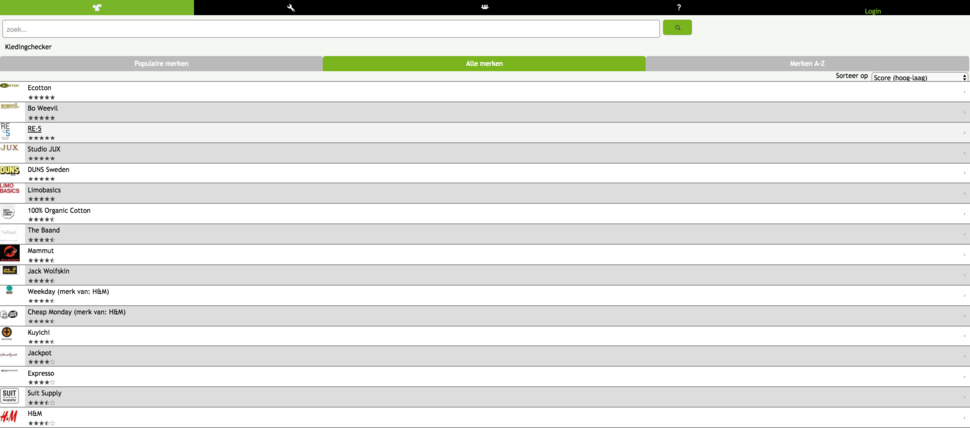Next to Engineering for Sustainable Development I am also following another course with sustainability as the main topic, it is called Strategic Sustainable Design. For this course we have to interview people from a company. This company, or case, has to have something to do with sustainability. This week we interviewed Anneke. One of the things we asked her is how the companies vision (working towards a blue economy) also influences her private life. This related in a conversation totally of topic for the project but for me personally very interesting. Things she did to achieve a sustainable way of living where for example reducing waste by bringing your own bag to the market. Something I am also doing as much as possible. But apart from the things I also do she took it a level further. Because of her interest in clothing she started looking at different ways of producing clothing and kinds of clothing. The things she was wearing at the time of the interview were: a t-shirt made of biological cotton, a jacket made by herself also of biological cotton and pants with a special coating to make it unnecessary to wash it (she has been using it for approximately 6 months now without washing).
This made me think about my own clothing. At this moment I am wearing clothes I ordered online, made in China and with an unknown kind of cotton. I immediately feel guilty about the clothes I am wearing, so I started looking for sustainable clothes. The websites I found were not only trying to get rid of their dull (geitenwollen sokken) image, they even advertised with it. I found a rating system for clothing brands (check.goedewaar.nl and rankabrand.nl) You can choose for popular brands, or all brands. From the popular brands I found out that H&M is actually on the top. Since I was convinced that H&M must be really bad because of their low prices, this really surprised me. At check.goedewaar.nl they use three factors to rate a company: social (no child labor), ecological (no pollution) and economical (fair prices). Especially on social H&M higher their score, while ecological and economical are actually not that heigh. It does prove that creating awareness helps for a company like H&M to shift into a more sustainable way of producing clothing, but in this case their is still a lot of improvement possible After looking at the popular brands I looked up a company of which I know of is sustainable: Kuyichi. I was happy to see that they scored higher than H&M, but they have their high score because of ecological sustainability. Considering economical they actually scored really low, so also for them there are still a lot of things to improve from a sustainable point of view, while this is a company that advertises themselves as a sustainable clothing brand.
In the interview Anneke told us she looks at it this way: paying for a product is like voting for that company or kind of product. So every time you buy something you vote. In the future I am going to vote differently, when voting I will try to vote for as much sustainable clothing as I can. Although I have to look a little more into the sustainability of brands that I can find at stores instead of only online, I really want to be more considerate about my clothing. The only problem left though is the price of sustainable clothing, to be able to buy them I will have to save some money, which also causes me to buy less clothes. Maybe that last thing is already a good incentive, buying less clothes definitely saves energy and materials.
